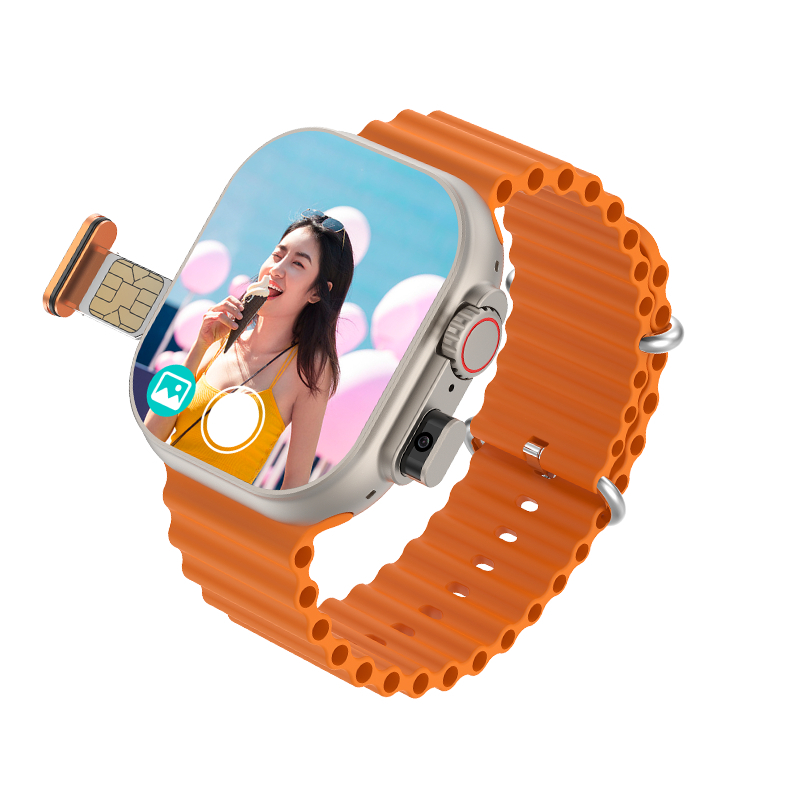Wearable technology is using the digital age to change the way we connect with one another. Smartwatches, specifically, are evolved timekeeping devices — they are now mini smartphones strapped to your wrist. Another major component that allows for this seamless functionality are SIM cards. These tiny chips enable smartwatches to make calls, send messages, access the internet, and run a variety of apps independent of a paired smartphone. So how DO SIM cards work in wearable devices, and why are they so critical? This article explores the inner workings of SIM cards in smartwatches and how they propel the connectivity we sometimes overlook.
Table of Contents
Wearable Tech and Smartwatches Go Mainstream
In the past ten years, wearables such as fitness trackers, health monitors, and smartwatches have become exponentially popular. Among them, smartwatches stand out the most due to their versatile features — everything from tracking your steps and monitoring your heart rate — to getting notifications, making payments, and even taking phone calls. What enables all of this is the capability to connect to a mobile network — and that’s where SIM cards come into play.
However, traditional SIM cards are too big for the small design of smartwatches. Of course, this is why all wearable manufacturers are making smaller solutions like nano-SIMs and eSIMs (embedded SIMs). eSIMs are particularly helpful as they are integrated into the device itself and don’t need a SIM card slot. That enables manufacturers to make sleeker, more water-resistant designs — without sacrificing connectivity.
In countries like India, it is important to cache the number of active SIM cards registered on behalf of a user. And here is the TAPCOF portal, coming into the picture. It identifies the mobile numbers associated with their identity without revealing personal information that might lead to misuse. This database comes handy when you are adding a SIM card to your wearable, always check it out and make sure that the SIM card is registered under your name.
The way the SIM Cards work in the smartwatches.
To dive into how SIM cards facilitate smartwatch connectivity, there is a need to look at the basic operating functioning. It is a small chip inserted into the mobile phone that stores the International Mobile Subscriber Identity (IMSI) and a unique authentication key. These two identifiers allow your device to register with your mobile network provider. Once activated, the smartwatch can work on the cellular network like your phone.
Your smartwatch has a functional SIM (or eSIM) and is capable of sending and receiving calls and messages directly. That’s helpful when you’re away from your phone — when you’re jogging, exercising, running errands, etc. Some smartwatches support LTE or 4 G connectivity as well, which means you can stream music & access GPS, and go on the internet, making them a stand-alone device.
Bear in mind that adding another SIM to your account could trigger security protocols — in controlled environments, especially. If you have applied for a SIM through a national portal like TAPCOF, but you want to cancel the SIM request or make any change, knowing how to cancel TAPCOF request is very important. Or you can send a request to block itThis request has been canceled will help you keep your personal information controlled and avoid the use of someone’s credentials for activating another SIM card.
Flood Zone: Benefits and Disadvantages of SIM Cards in Smartwatches
Stand-Alone Functionality
A SIM card untethers smartwatches from your smartphone over Bluetooth. You can make calls, use apps and access the internet even if your phone is miles away. Such autonomy boosts user experience and ensures more liberty.
Emergency Features
(There are also many SIM-enabled smartwatches that come with SOS features, letting you send-bits or connect to services, right from the device directly.) This is especially beneficial for children, seniors and those with medical conditions.
A great Assistant for Fitness and Health Tracking with real-time sync
That’s a game-changer for fitness enthusiasts and health-conscious users who revel in real-time syncing. SIM-enable Smartwatches transfer the data to cloud platforms or fitness apps without getting paired with a cell phone; data is accurate and transferable seamless.
Parental Control and Safety
Kids’ smartwatches with built-in SIM cards come with a life-line for parents to be connected with their children. These watches typically include GPS tracking, calling functions, and geofencing features to provide parents with security.
SIM Card Types Used in Smartwatches
Smartwatches come with two types of SIM cards:
- Nano SIM: The slimmest form of traditional SIM cards, still need physical slot
- eSIM: A digital SIM embedded in the device’s hardware, activated remotely.
eSIMs are increasingly becoming the standard for high-end wearables. They make it easier to change mobile operators and eliminate the need for plastic SIM cards, so they’re good for the planet too.
Use of SIM Card in Smartwatch: Things to Consider
- Carrier Compatibility: Not all mobile carriers have eSIM or smartwatch-compatible SIM support. Before buying, check with your provider.
- Plan Charges: Most of the SIM-enabled smart watches need an additional line or data plan. Some providers have special plans for wearables priced lower.
- Battery Life: Your battery will last longer without cellular. Just ensure that the smartwatch you go for has a decent battery performance.
- Type of Network: If you are in a place that has poor mobile signal, a SIM-enabled smartwatch may not hold a stable connection.
One of the factors limiting any real advances for a decade.
Like any connected device, privacy is a major concern. As more and more devices continue to be associated with your mobile number or a unique identifier for your device or identity, there are good reasons for better flagging of devices that you, the user, are aware of. Apps such as TAPCOF portal allow users to keep a check on their SIM usage and prevent SIM fraud or duplication. So whether you are adding a new SIM to your wearable or deleting an unused number, follow the right steps including how to cancel TAPCOF request.
The Evolution of SIM technology for Wearable Devices
The immediate future of SIM technology is eSIM, followed by a possible leap into iSIM (integrated SIM) — where SIM functionality can be embedded into the device chipset. This may allow even less space to be used and a better performance of the device. Similarly, with the rise of 5G, we should also see improved speeds and lower latency across linked smartwatches, giving way to new use cases across health, gaming, and productivity.
With wearables becoming mainstream, we might also witness tight integration with AI assistants, biometrics-sensors, and IoT ecosystems, with smartwatches serving as central hubs for all connected devices. These innovations will be based on reliable mobile connectivity through SIM cards.
Conclusion
It’s SIM cards — particularly eSIMs — that are the unsung heroes of the seamless operation of current smartwatches. They have the crucial capability to connect with mobile networks, enabling these wearables to operate autonomously and intelligently. The extra freedom provided by a SIM-enabled smartwatch can really boost your lifestyle, whether you are a fitness fanatic, a busy professional, or a parent who wants to stay in touch with your child! Be sure to keep the connected numbers you control using websites like TAPCOF, and if you want to know how to cancel TAPCOF request in case it is necessary and to retain control of your digital identity.












